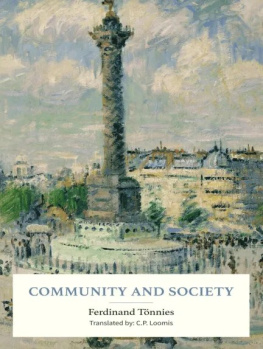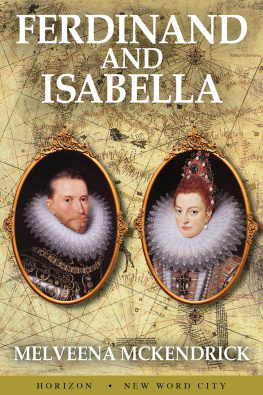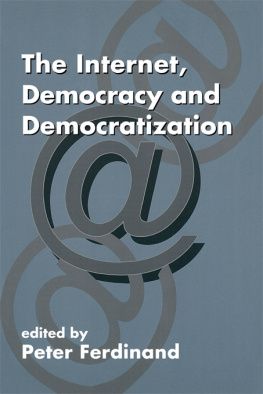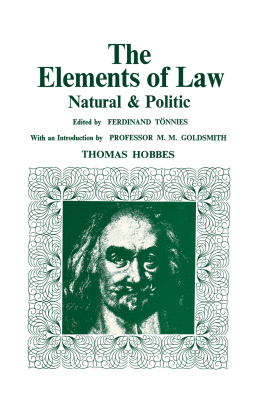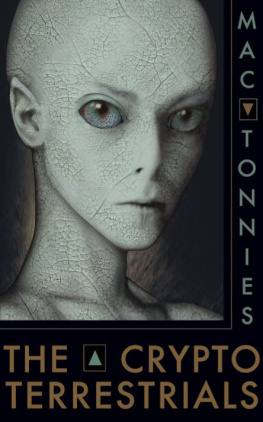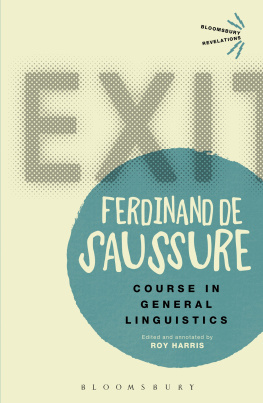Ferdinand Tönnies - Community and Society
Here you can read online Ferdinand Tönnies - Community and Society full text of the book (entire story) in english for free. Download pdf and epub, get meaning, cover and reviews about this ebook. year: 2017, publisher: Martino Fine Books, genre: Romance novel. Description of the work, (preface) as well as reviews are available. Best literature library LitArk.com created for fans of good reading and offers a wide selection of genres:
Romance novel
Science fiction
Adventure
Detective
Science
History
Home and family
Prose
Art
Politics
Computer
Non-fiction
Religion
Business
Children
Humor
Choose a favorite category and find really read worthwhile books. Enjoy immersion in the world of imagination, feel the emotions of the characters or learn something new for yourself, make an fascinating discovery.
- Book:Community and Society
- Author:
- Publisher:Martino Fine Books
- Genre:
- Year:2017
- Rating:5 / 5
- Favourites:Add to favourites
- Your mark:
- 100
- 1
- 2
- 3
- 4
- 5
Community and Society: summary, description and annotation
We offer to read an annotation, description, summary or preface (depends on what the author of the book "Community and Society" wrote himself). If you haven't found the necessary information about the book — write in the comments, we will try to find it.
Community and Society — read online for free the complete book (whole text) full work
Below is the text of the book, divided by pages. System saving the place of the last page read, allows you to conveniently read the book "Community and Society" online for free, without having to search again every time where you left off. Put a bookmark, and you can go to the page where you finished reading at any time.
Font size:
Interval:
Bookmark:
COMMUNITY
&
SOCIETY
COMMUNITY
&
SOCIETY
by
FERDINAND TNNIES
TRANSLATED FROM THE GERMAN BY C.P. LOOMIS

Copyright 2020 Mockingbird Press
All rights reserved. The original works are in the public domain to the best of publishers knowledge. The publisher makes no claim to the original writings. However, the compilation, construction, cover design, trademarks, derivations, foreword, descriptions, added work, etc., of this edition are copyrighted and may not be reproduced, distributed, or transmitted in any form or by any means, including photocopying, recording, or other electronic or mechanical methods, without the prior written permission of the publisher, except in the case of brief quotations embodied in critical reviews and certain other non-commercial uses permitted by copyright law.
Cover Art, La Place de la Bastille, Gustave Loiseau 1922
Cover Design by Nami Kurita, Copyright 2020 Mockingbird Press
Interior Design by Maria Johnson
Publishers Cataloging-In-Publication Data
Tnnies, Ferdinand, author; with Loomis, C.P., editor
Community and Society / Ferdinand Tnnies; with C.P. Loomis.
| Paperback | ISBN-13: 978-1-953450-18-0 |
| Hardback | ISBN-13: 978-1-953450-19-7 |
| Ebook | ISBN-13: 978-1-953450-20-3 |
1. Social ScienceSociologySocial Theory. 2. Society and Social SciencesSociology and Anthropology. I. Ferdinand Tnnies. II. C.P. Loomis. III. Title.
SOC026040 / JH
Type Set in Century Schoolbook / Franklin Gothic Demi
Mockingbird Press, Augusta, GA
(Gemeinschaft und Gesellschaft)
Translated and Edited By
CHARLES P. LOOMIS
As translator, I wish to acknowledge the assistance of Professor and Mrs. Rudolf Heberle, who have compared the English manuscript with the original and who have made substantial contributions to the rendition of difficult passages. Likewise, I wish to thank Professors Pitirim A. Sorokin, Talcott Parsons, and Kimball Young for suggestions and advice; also, Dr. Berta Asch, Mr. Gerhard Dittmann, Dr. B. Landheer, and Kathryn Van Hyning for technical assistance. For reading and rereading manuscript and proof, and for many improvements in final rendition, I am very much indebted to Dr. Nellie Loomis. Special acknowledgment is also due to the Social Science Research Council for a grant-in-aid which enabled me to complete the work. In addition, William V. DAntonio prepared the index and Carle P. Graffunder assisted in proofreading.
CHARLES P. LOOMIS
LIKE MANY an eminent thinker, Tnnies was a man of one central idea, which he developed in its various ramifications in practically all his theoretical works. This central idea is, of course, his theory of Gemeinschaft and Gesellschaft as two different modes of mentality and behavior, and as two different types of society. In its essentials the theory did not originate with Tnnies. Like many fundamental categories of social thought, it is in a sense eternal, appearing long before Tnnies and reiterated after him. The Gemeinschaft type of mentality and society was extolled by Confucius: Confucius theory of the five fundamental social relationships of father and son, elder brother and younger, husband and wife, ruler and subject, friend and friend closely resembles Tnnies main Gemeinschaft ties between mother and child, father and children, sisters and brothers, friends and friends, and rulers and subjects. Confucius not only unfolded the Gemeinschaft type of society but also set it off against the Gesellschaft type. In his theory of the main stages of human society he differentiated the Gesellschaft type by the term Small Tranquillity in contradistinction to that of the Great Similarity, or Gemeinschaft stage.
Plato in his Republic and Laws likewise gave a full portrait of both types of society, as well as of human personality. His ideal republic, especially the personality and social regime of the Guardians, is clearly and definitely of the Gemeinschaft type, while his detailed picture of the oligarchic or capitalistic society and man is a conspicuous example of the Gesellschaft type. Aristotle and, after him, Cicero, in their analyses of the true and false friendship, gave us in clear-cut form the classical outlines of the two types. The same types are found running through the works of the Church fathers, especially those of St. Augustine. Here the theory of the Church and the City of God as the corpus mysticum of Gemeinschaft type is contrasted to the society of man depicted along the lines of the Gesellschaft type. Throughout the writings of the great medieval thinkers like Joachim de Fiore, Albertus Magnus, St. Thomas Aquinas, Nicolaus Cusanus, and others the dichotomy persists. On the other hand it is also the central idea of the great Arabian thinker, Ibn Khaldun, in his History of Berbers and in his Prolegomenes to the Universal History. His analysis of both types is one of the most penetrating, detailed, and enlightening.
In varied forms the categories continued to function in the writings of the social thinkers of the later centuries. In Germany particularly, as Gierke has clearly shown, the Gemeinschaft type was deeply rooted in the very soil of the Teutonic culture since its emergence on the historic scene. In the time immediately preceding the appearance of Tnnies work both types of society and personality were well depicted by many a German thinker, beginning with the leaders of the Historical School, Savigny and Puchta, and ending with Hegel, whose Family-Society and Civic Society are almost twins of Tnnies Gemeinschaft and Gesellschaft.
The two types continued to be reiterated after Tnnies by many: Durkheim, Makarewitz, Kistiakowsky, up to the writer of this preface. The above genealogy is mentioned not for the purpose of detracting from the value of the contribution made by Tnnies but for establishing a proper historical perspective in regard to it. After all, among the fundamental categories and concepts of the social science there is hardly one that was not mentioned, developed, and used by the social thinkers of antiquity and past centuries. If a modern social scientist makes an artful use of them in his individual manner, showing their value and painting his own picture with their help, his contribution is made, and its greatness will depend upon the artistry used. That is exactly what Tnnies did, giving us his variation on the eternal theme of the Gemeinschaft and Gesellschaft. We should accord Tnnies even greater acknowledgment in view of the fact that he published his work when the Gesellschaft type of society was at its climax, full of vigor and life, showing no signs of weakness, and triumphantly driving out of existence the Gemeinschaft type. At that time few thinkers could see its inherent and well-hidden weaknesses, and still fewer were able to go to their roots as Tnnies did. No wonder that his book in its first edition produced little response, and even that was largely negative. Subsequent decades have shown, however, the validity of most of the conclusions of Tnnies. At the present time most intelligent men probably know that the hidden weaknesses of the Gesellschaft type of society and man have grown to such an extent that the type is in the deepest crisis and is crumbling before our very eyes. The contemporary crisis of what many call capitalistic or contractual society is but a different name for a crisis of the Gesellschaft type of society and man. From this standpoint Tnnies work is in a sense prophetic and has theoretical as well as a deep, practical significance.
Next pageFont size:
Interval:
Bookmark:
Similar books «Community and Society»
Look at similar books to Community and Society. We have selected literature similar in name and meaning in the hope of providing readers with more options to find new, interesting, not yet read works.
Discussion, reviews of the book Community and Society and just readers' own opinions. Leave your comments, write what you think about the work, its meaning or the main characters. Specify what exactly you liked and what you didn't like, and why you think so.

